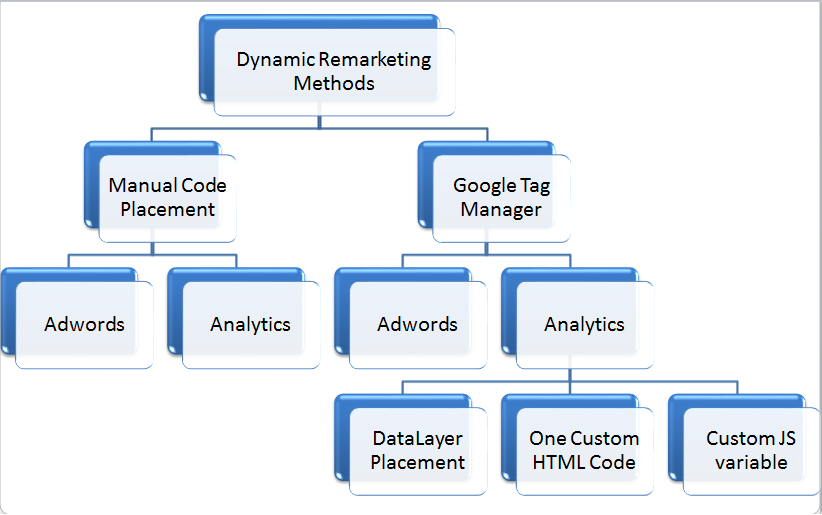Taking Advantage Of Remarketing in Google Analytics: A Comprehensive Guide
Utilizing remarketing in Google Analytics supplies organizations a tactical edge in reaching out to prospective consumers. This guide will drop light on the vital steps included in harnessing the full potential of remarketing in Google Analytics, leading to enhanced advertising outcomes.
Comprehending Remarketing in Google Analytics
Remarketing in Google Analytics enables businesses to tactically target customers that have formerly communicated with their web site or mobile app. By leveraging information from Google Analytics, companies can develop personalized remarketing listings based upon user behavior, such as pages seen, activities taken, or particular goals achieved. This effective tool makes it possible for services to re-engage with users who have actually shown rate of interest in their service or products, inevitably boosting the probability of conversion.
Comprehending the various kinds of remarketing approaches is important for a successful project - What Is “Remarketing” In Google Analytics?. Google Analytics offers different choices, including typical remarketing, dynamic remarketing, and remarketing listings for search ads (RLSA) Each kind serves a special purpose and can be customized to meet specific advertising and marketing objectives
Moreover, examining the efficiency of remarketing campaigns is crucial for optimizing results. Google Analytics gives beneficial understandings into the effectiveness of various remarketing methods, permitting organizations to make data-driven decisions and fine-tune their targeting strategy. By continually adjusting and keeping track of remarketing efforts based on analytics information, businesses can optimize ROI and drive success in their advertising efforts.
Establishing Remarketing Projects

After establishing audience checklists, the following action is to connect Google Analytics with Google Ads. By connecting these 2 systems, services can flawlessly move target market lists from Google Analytics to Google Ads for remarketing purposes. This integration enables for even more specific targeting and much better campaign efficiency.
When the accounts are linked, services can develop remarketing campaigns in Google Advertisements using the target market provides previously defined in Google Analytics. These projects can be personalized with certain ad creatives, messaging, and bidding process approaches to effectively re-engage with previous visitors and drive conversions. By following these steps, organizations can take advantage of the power of remarketing to boost their advertising and marketing initiatives and boost ROI.
Using Audience Segmentation Methods

Predefined segments in Google Analytics allow you to promptly assess usual audience categories like new individuals, returning customers, or users who finished a specific objective on your site. Personalized sectors, on the other hand, enable you to create special segments based on particular criteria that are very important to your company objectives. Dynamic remarketing checklists automatically readjust based on individual habits, showing individualized ads to individuals who have connected with your site particularly means.
Studying Remarketing Efficiency Metrics
Upon evaluating the efficiency of remarketing campaigns in Google Analytics, the evaluation of crucial efficiency metrics supplies beneficial understandings into audience interaction and conversion rates. By diving into metrics such as click-through prices (CTR), conversion rates, price per purchase (CPA), and return on ad invest (ROAS), marketing professionals can gauge the success of their remarketing efforts. CTR shows the percentage of customers who clicked the ad after watching it, showing the ad's relevance and allure. Conversion rates determine the percentage of users who completed a preferred activity, such as making an acquisition, after clicking on the advertisement. CPA discloses the ordinary price incurred for each and every conversion, helping evaluate project earnings. ROAS, on the various other hand, quantifies the revenue generated for every single dollar invested in advertising. Assessing these metrics enables marketing professionals to enhance projects, refine audience targeting, and allocate budgets efficiently to enhance overall remarketing efficiency.
Optimizing Remarketing Techniques
When refining remarketing approaches in Google Analytics, concentrating on target market division is paramount for accomplishing project success. By splitting your target market right into specific sections based on their habits, demographics, or passions, you can tailor your ads better to every team. This targeted technique enhances the likelihood find out here now of involving individuals who have actually currently revealed passion in your product and services, causing higher conversion prices.
One more important facet of optimizing remarketing techniques is constantly screening and refining your projects (What Is “Remarketing” In Google Analytics?). A/B testing various ad creatives, messaging, or deals can aid you recognize what resonates finest with your target market and drives one of the most conversions. By analyzing the performance of these examinations in Google Analytics, you can make data-driven decisions to optimize your remarketing initiatives better
Additionally, leveraging dynamic remarketing can significantly improve your campaign results. This function enables you to reveal personalized advertisements to users based upon their past interactions with your site, showcasing services or products they have previously viewed. By supplying customized material to individuals based on their habits and rate of interests, vibrant remarketing can aid boost involvement and drive conversions.
Verdict
To conclude, utilizing remarketing in Google Analytics is a strategic approach to target customers that have actually formerly engaged with a web site. By producing tailored audience checklists and using target market segmentation strategies, organizations can enhance click now remarketing advocate increased conversion rates. Analyzing efficiency metrics and continuously optimizing techniques are vital for making the most of the performance of remarketing initiatives.
Google Analytics provides different options, consisting of basic remarketing, dynamic remarketing, and remarketing listings for search advertisements (RLSA)After setting up target market lists, the following action is to connect Google Analytics with Google Advertisements. By connecting these 2 platforms, organizations can flawlessly move target market listings from Google Analytics to Google Ads for remarketing read here functions.As soon as the accounts are connected, companies can create remarketing campaigns in Google Ads utilizing the target market provides formerly defined in Google Analytics.When refining remarketing approaches in Google Analytics, concentrating on target market segmentation is extremely important for achieving project success.
 Rick Moranis Then & Now!
Rick Moranis Then & Now! Bradley Pierce Then & Now!
Bradley Pierce Then & Now! Tatyana Ali Then & Now!
Tatyana Ali Then & Now! Michael Fishman Then & Now!
Michael Fishman Then & Now! James Van Der Beek Then & Now!
James Van Der Beek Then & Now!